June 2025
North America News
In the US, when hazards are identified in consumer products, they will be recalled and published in the Consumer Product Safety Commission (CPSC) Recent Recalls on the CPSC website, which is updated daily. The US recalls from 01 May 2025 to 31 May 2025 are summarized below:
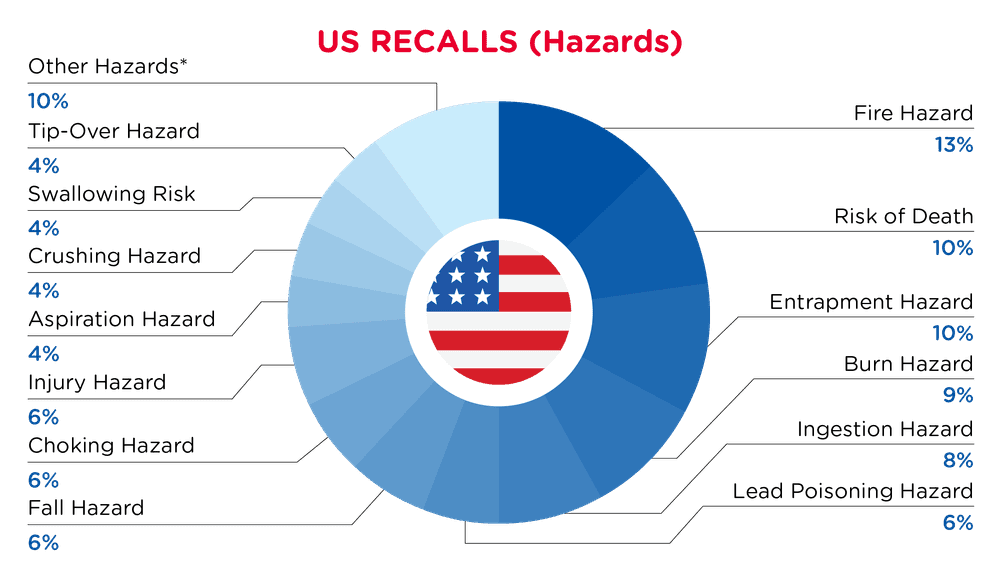
| Hazards | Frequency |
| Fire Hazard | 7 |
| Risk of Death | 6 |
| Entrapment Hazard | 6 |
| Burn Hazard | 5 |
| Ingestion Hazard | 4 |
| Lead Poisoning Hazard | 3 |
| Fall Hazard | 3 |
| Choking Hazard | 3 |
| Injury Hazard | 3 |
| Aspiration Hazard | 2 |
| Crushing Hazard | 2 |
| Swallowing Risk | 2 |
| Tip-Over Hazard | 2 |
| Other Hazards* | 6 |
*Other Hazards include Electric Shock Hazard, Impact Hazard, Laceration Hazard, Poisoning Hazard, Amputation Hazard and Suffocation Hazard with a frequency of less than 2.
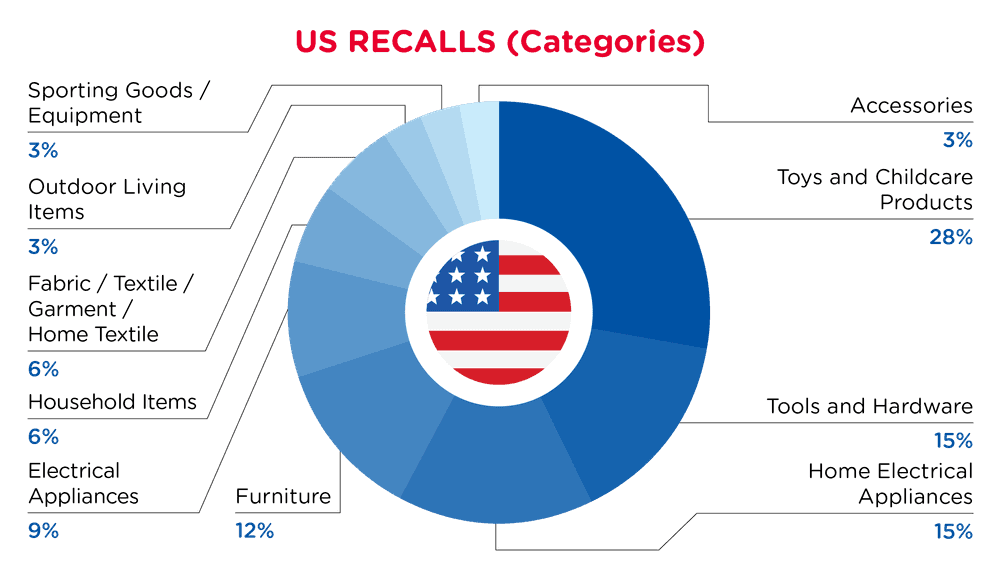
| Product Categories | Frequency |
| Toys and Childcare Products | 9 |
| Tools and Hardware | 5 |
| Home Electrical Appliances | 5 |
| Furniture | 4 |
| Electrical Appliances | 3 |
| Household Items | 2 |
| Fabric / Textile / Garment / Home Textile | 2 |
| Outdoor Living Items | 1 |
| Sporting Goods / Equipment | 1 |
| Accessories | 1 |
For a complete list click here
Washington State has updated its law on lead-containing cookware. The amendment entails a revision of the law’s scope and the introduction of certain exemptions.
In 2024, Washington State made a move to cut down on lead in cookware by passing HB 1551, which is now part of the 70A.565 RCW code.
On 13 May 2025, the Governor of Washington signed Engrossed Substitute SB 5628 into law, which is now recognized as Chapter 266, 2025, amending the state’s legal framework 70A.565 RCW code regarding lead in cookware.
Comparison of the restrictions:
Definitions
In the new law amended by SB 5628, cookware and components are specified as items made of brass or aluminum materials.
"Aluminum or brass cookware" means the following items when made from brass or aluminum:
Pots, pans, kettles, griddles, grills, internal pots for devices such as rice cookers or pressure cookers, and similar vessels or surfaces in or on which food is cooked.
Exception: Items with only an internal layer of aluminum or brass that is completely enclosed by stainless steel; or the body of electronic cooking devices with removable cooking containers, such as slow cookers, rice cookers, and pressure cookers.
2. "Aluminum or brass cookware components" means cookware parts made of aluminum or brass such as:
Lids, rivets, fasteners, valves, and vent pipes.
3. "Aluminum or brass utensils" means tools made from aluminum or brass such as:
Knives, forks, spoons, spatulas, and similar tools used for preparing, serving, or eating food, unless completely enclosed by stainless steel.
Restrictions:
| New action | Previous action | |
| Target substance | Lead | Lead |
| Product scope | Aluminum or brass cookware Aluminum or brass cookware components Aluminum or brass utensils | Cookware and cookware components |
| Requirements | ≤ 90 2026) ≤ 10 ppm (1 January 2028)* | ≤ 5 ppm (1 January 2026) |
* After December 2030, the 10 ppm limit may be lowered if it is determined that the lower limit is feasible for cookware and cookware component manufacturers to achieve and is necessary to protect human health.
Impact to Regulated Entities
This amendment reflects the Food and Drug Administration’s (FDA’s) stance as communicated in its Warning Letter to Retailers and Distributors of Cookware. On 12 December 2024, the FDA issued the warning letter informing stakeholders about the potential risk of lead leaching from certain imported cookware products manufactured from aluminium, brass, and aluminium alloys into food. Retailers and distributors concerned are expected to implement necessary measures to guarantee compliance with laws for high-risk materials and products.
In Canada, when hazards are identified in consumer products, they will be recalled and published in the Recalls and Safety Alerts Database on the Health Canada website, which is updated daily. The Canada recalls from 01 May 2025 to 31 May 2025 are summarized below:
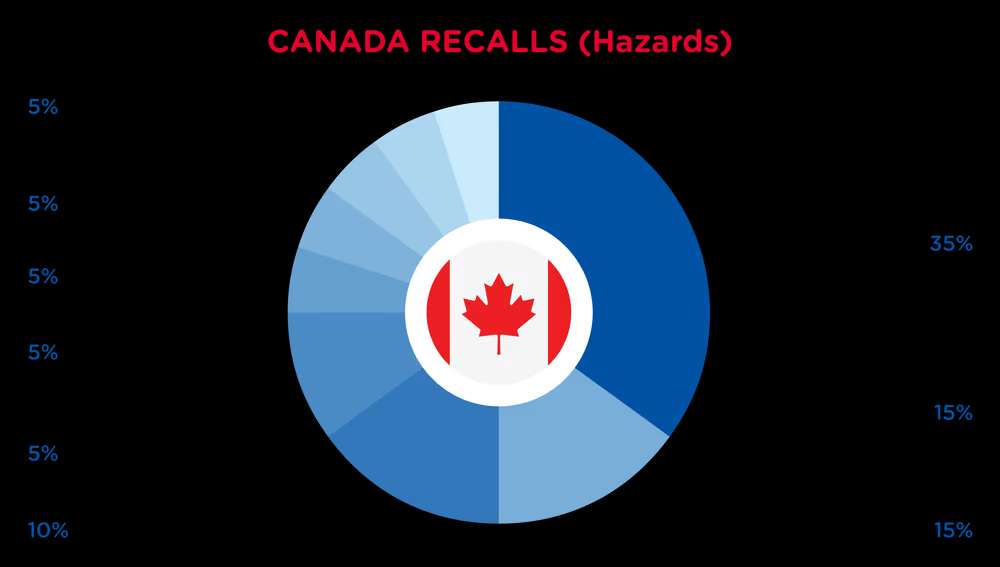
| Hazards | Frequency |
| Chemical Hazard | 7 |
| Burn Hazard | 3 |
| Choking Hazard | 3 |
| Fire Hazard | 2 |
| Electric Shock Hazard | 1 |
| Ingestion Hazard | 1 |
| Impact Hazard | 1 |
| Strangulation Hazard | 1 |
| Entrapment Hazard | 1 |
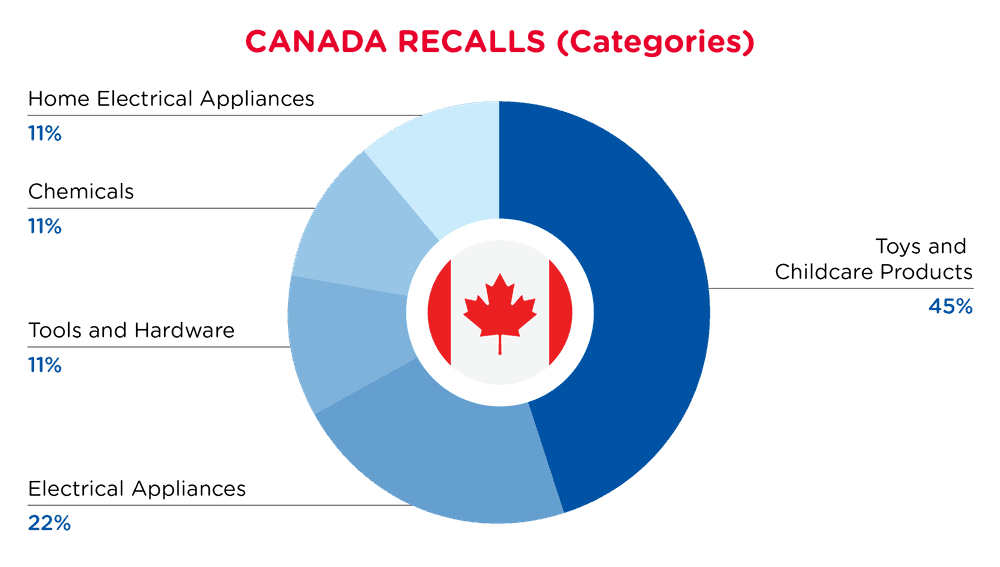
| Product Categories | Frequency |
| Toys and Childcare Products | 8 |
| Electrical Appliances | 4 |
| Tools and Hardware | 2 |
| Chemicals | 2 |
| Home Electrical Appliances | 2 |
For a complete list, click here
Europe News
In Europe, when hazards are identified in non-food consumer products, the products will be recalled and published in the Safety Gate system, which is updated weekly. The European recalls from 01 May 2025 to 31 May 2025 are summarized below:
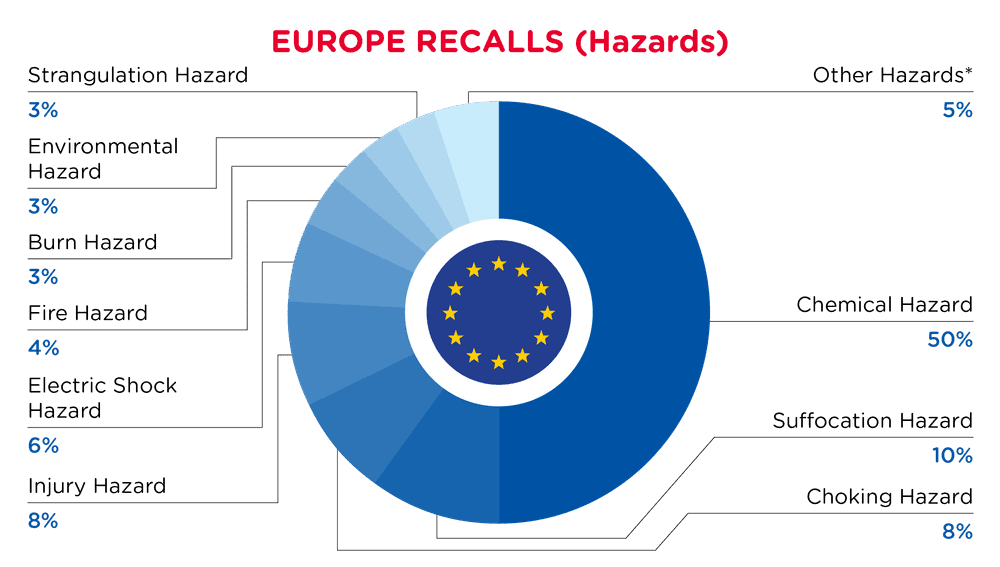
| Hazards | Frequency |
| Chemical Hazard | 158 |
| Suffocation Hazard | 31 |
| Choking Hazard | 24 |
| Injury Hazard | 24 |
| Electric Shock Hazard | 18 |
| Fire Hazard | 14 |
| Burn Hazard | 10 |
| Environmental Hazard | 9 |
| Strangulation Hazard | 9 |
| Other Hazards* | 17 |
| Hazards | Frequency |
| Chemical Hazard | 158 |
| Suffocation Hazard | 31 |
| Choking Hazard | 24 |
| Injury Hazard | 24 |
| Electric Shock Hazard | 18 |
| Fire Hazard | 14 |
| Burn Hazard | 10 |
| Environmental Hazard | 9 |
| Strangulation Hazard | 9 |
| Other Hazards* | 17 |
*Other Hazards include Health Risk Hazard, Drowning Hazard, Microbiological Hazard, Damage to Sight, Risk of Difficulty Breathing, Cut Hazard and Entrapment Hazard with a frequency of less than 8.
| Product Categories | Frequency |
| Bodycare / Cosmetics | 132 |
| Toys and Childcare Products | 55 |
| Fabric / Textile / Garment / Home Textile | 37 |
| Electrical Appliances | 28 |
| Computer / Audio / Video / Other Electronics & Accessories | 6 |
| Protective Equipment | 6 |
| Machinery | 5 |
| Sporting Goods / Equipment | 5 |
| Jewelry | 5 |
| Other Categories* | 16 |
*Other Categories include Home Electrical Appliances, Furniture, Chemicals, Tools and Hardware, Food Contact Material, Travel Items, Footwear and Accessories with a frequency of less than 4.
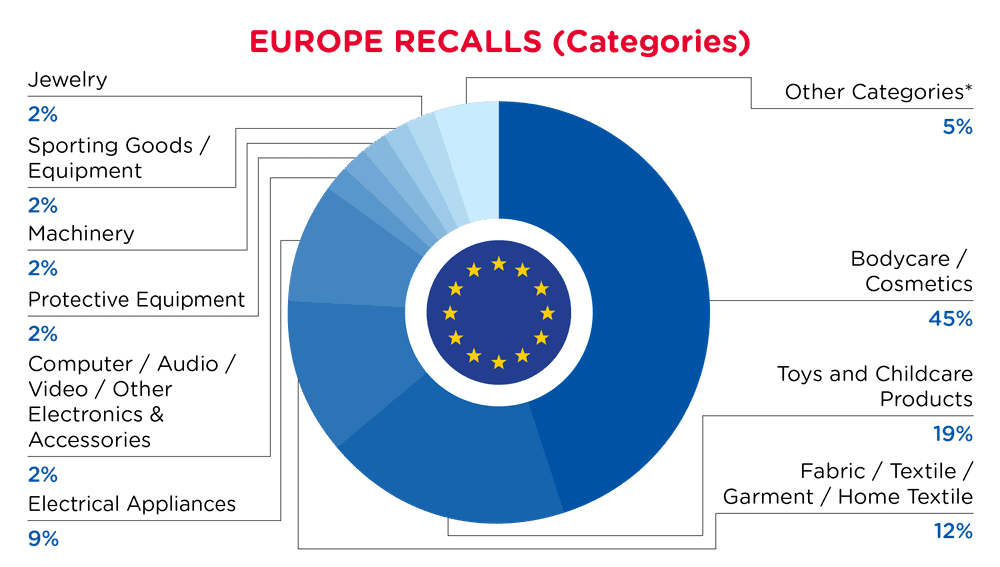
| Product Categories | Frequency |
| Bodycare / Cosmetics | 132 |
| Toys and Childcare Products | 55 |
| Fabric / Textile / Garment / Home Textile | 37 |
| Electrical Appliances | 28 |
| Computer / Audio / Video / Other Electronics & Accessories | 6 |
| Protective Equipment | 6 |
| Machinery | 5 |
| Sporting Goods / Equipment | 5 |
| Jewelry | 5 |
| Other Categories* | 16 |
*Other Categories include Home Electrical Appliances, Furniture, Chemicals, Tools and Hardware, Food Contact Material, Travel Items, Footwear and Accessories with a frequency of less than 4.
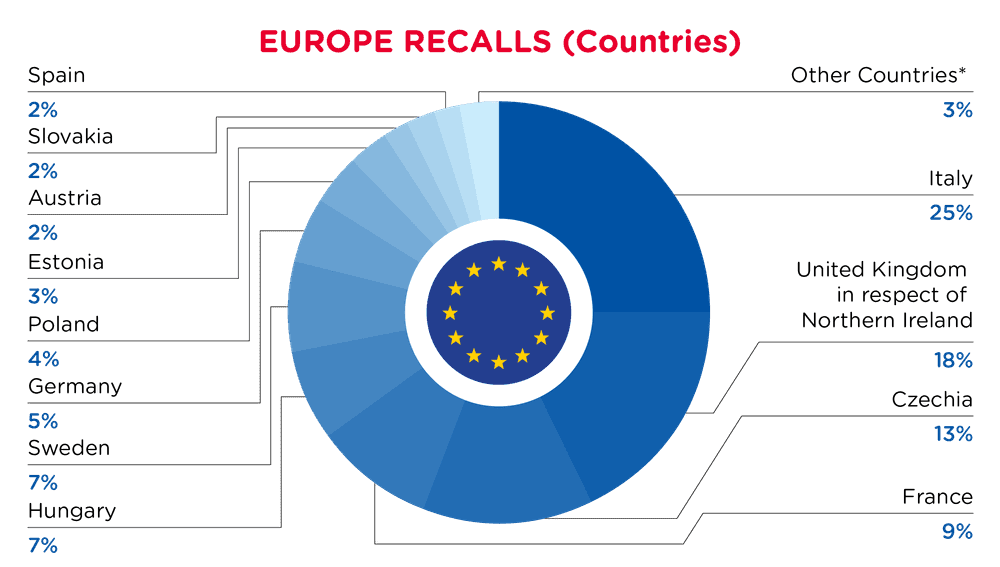
| Notifying Country | Frequency |
| Italy | 77 |
| United Kingdom in respect of Northern Ireland | 53 |
| Czechia | 38 |
| France | 26 |
| Hungary | 21 |
| Sweden | 20 |
| Germany | 15 |
| Poland | 11 |
| Estonia | 8 |
| Austria | 6 |
| Slovakia | 5 |
| Spain | 5 |
| Other Countries * | 10 |
*Other Countries include Ireland, Belgium, Lithuania, Finland, Luxembourg and Cyprus with a frequency of less than 3.
For a complete list click here
ECHA announced that on 25 June 2025, three hazardous chemicals were included as members of the SVHC Candidate List.
On 28 February 2025, the European Chemical Agency (ECHA) launched a 45-days public consultation on several chemicals, as potential Substances of Very High Concern (SVHC).
After further discussion within ECHA’s Member State Committee, three substances were concluded to be members of the SVHC Candidate List (Candidate List).
Based on the above conclusion in ECHA’s Member State Committee, ECHA officially added three hazardous substances to the Candidate List on 25 June 2025.
The number of SVHCs on the Candidate List is now updated to 250 entries.
Details of the new SVHC chemicals added to the Candidate List are summarized (from the ECHA website) in the below tables.
Three New SVHCs:
| Substance name | EC number | CAS number | Reason for inclusion | Examples of use |
| 1,1,1,3,5,5,5-heptamethyl-3-[(trimethylsilyl)oxy]trisiloxane | 241-867-7 | 17928-28-8 | vPvB* (Article 57e) | Cosmetics and personal care products Perfumes and fragrances |
| Decamethyltetrasiloxane | 205-491-7 | 141-62-8 | vPvB* (Article 57e) | Cosmetics and personal care products Non-metal-surface treatment products Lubricants, greases, release products Automotive care products Washing and cleaning products (including solvent based products) |
| Tetra(sodium/potassium) 7-[(E)-{2-acetamido-4-[(E)-(4-{[4-chloro-6-({2-[(4-fluoro-6-{[4-(vinylsulfonyl)phenyl]amino}-1,3,5-triazine-2-yl)amino]propyl}amino)-1,3,5-triazine-2-yl]amino}-5-sulfonato-1-naphthyl)diazenyl]-5-methoxyphenyl}diazenyl]-1,3,6-naphthalenetrisulfonate; Reactive Brown 51 | 466-490-7 | / | Toxic for reproduction (Article 57c) | Textile treatment products and dyes |
*Remark:
vPvB = very Persistent and very Bioaccumulative
Manufacturers and importers should take note of these SVHCs and potential and current use in their processes or products to plan accordingly.
On 3 June 2025, the European Commission adopted Commission Regulation (EU) 2025/1090, restricting the use of two additional chemicals and amending the list of restrictions under Annex XVII to the REACH Regulation (EC No 1907/2006). This new regulation introduces stringent restrictions on the manufacture, use, and placing on the market of two industrial solvents, N,N-dimethylacetamide and 1-ethylpyrrolidin-2-one.
N,N-dimethylacetamide (DMAC, with CAS# 127-19-5) and 1-ethylpyrrolidin-2-one (NEP, with CAS# 2687-91-4) are widely used as solvents in various sectors, including:
Agrochemicals
Pharmaceuticals
Fine chemicals
Uses include:
Coatings and man-made fibres (DMAC)
Cleaning agents, oil field operations, and construction (NEP)
Both substances are classified as toxic to reproduction (category 1B in the regulation on classification, labeling and packaging of substances and mixtures), with DMAC also being acutely toxic. Existing exposure limits and risk management measures were found to be insufficient to adequately protect workers from health risks, particularly reproductive and liver toxicity.
Hence, Commission Regulation (EU) 2025/1090 was published, to amend the REACH Regulation (EC No 1907/2006) Annex XVII, which lists certain restricted hazardous substances, mixtures and articles for their marketing and use on the European market. The amendment adds two new entries – entry 80 and entry 81, to strengthen the control of DMAC and NEP for use in substances and mixtures. The new restrictions are designed to harmonize safety standards across the European Union (EU) and better protect workers’ health.
Details of these two new entries are summarized as below.
| Restricted Substances | Scope | Requirement | Effective Date |
| Entry 80: N,N-dimethylacetamide (DMAC) | Substance on its own as a constituent of other substances | < 0.3% (See Remark) | 23December 2026 For the usage as a “solvent in the production of man-made fibers”: 23rd June 2029 |
| Mixtures | |||
| Entry 81: 1-ethylpyrrolidin-2-one (NEP) | Substance on its own as a constituent of other substances | < 0.3% (See Remark) | 23 December 2026 |
Mixtures Remark:
This requirement could be exempted only if:
Manufacturers, importers and downstream users have included in the relevant chemical safety reports and safety data sheets, derived no-effect levels (DNELs) relating to DMAC’s exposure of workers of 13 mg/m3 for long-term exposure by inhalation (4.0 mg/m3 for NEP) and 1.8 mg/kg bw*/day for long-term dermal exposure (2.4 mg/kg bw/day for NEP).
Manufacturers and downstream users take the appropriate risk management measures and provide the appropriate operational conditions to ensure that exposure of workers is below the DNELs specified in point 1.
*bw = body weight
Manufacturers, importers and downstream users should take note for these chemicals and potential and/or current use in their processes to plan accordingly.
China News
In China, when hazards are identified in consumer products, they will be recalled and published in the SAMR Defective Product Administrative Centre, which is updated daily. The China recalls from 01 May 2025 to 31 May 2025 are summarized below:
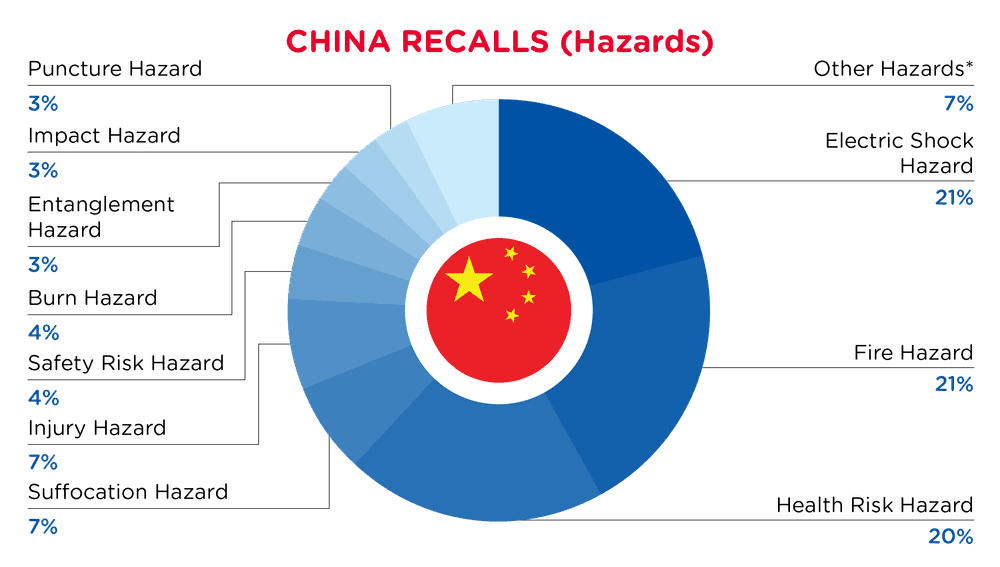
| Hazards | Frequency |
| Electric Shock Hazard | 17 |
| Fire Hazard | 17 |
| Health Risk Hazard | 16 |
| Suffocation Hazard | 6 |
| Injury Hazard | 6 |
| Safety Risk Hazard | 3 |
| Burn Hazard | 3 |
| Entanglement Hazard | 2 |
| Impact Hazard | 2 |
| Puncture Hazard | 2 |
| Other Hazards* | 6 |
*Other Hazards include Laceration Hazard, Explosion Hazard, Microbiological Hazard, Fall Hazard, Damage to Hearing and Swallowing Risk with a frequency of less than 2.
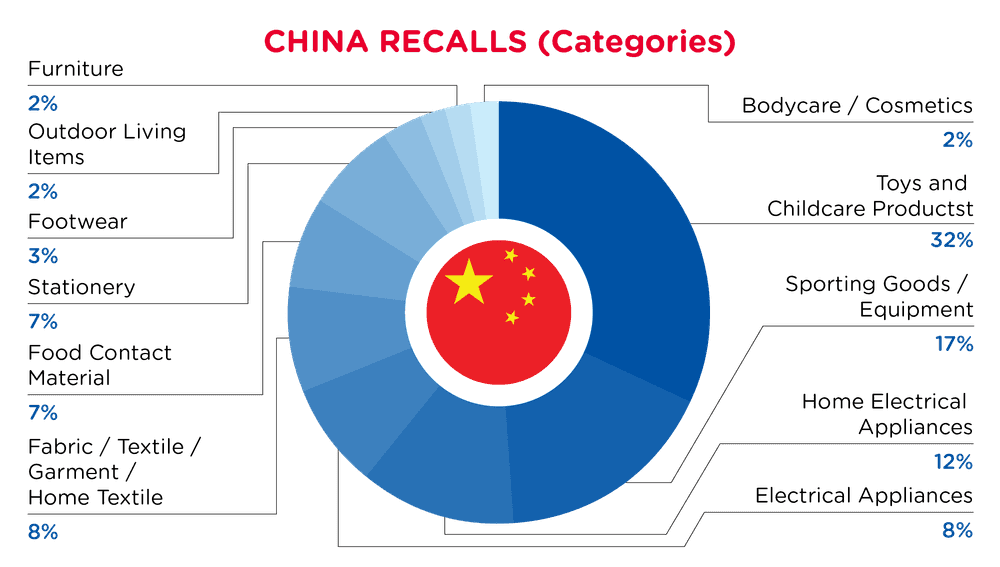
| Product Categories | Frequency |
| Toys and Childcare Products | 19 |
| Sporting Goods / Equipment | 10 |
| Home Electrical Appliances | 7 |
| Electrical Appliances | 5 |
| Fabric / Textile / Garment / Home Textile | 5 |
| Food Contact Material | 4 |
| Stationery | 4 |
| Footwear | 2 |
| Outdoor Living Items | 1 |
| Furniture | 1 |
| Bodycare / Cosmetics | 1 |
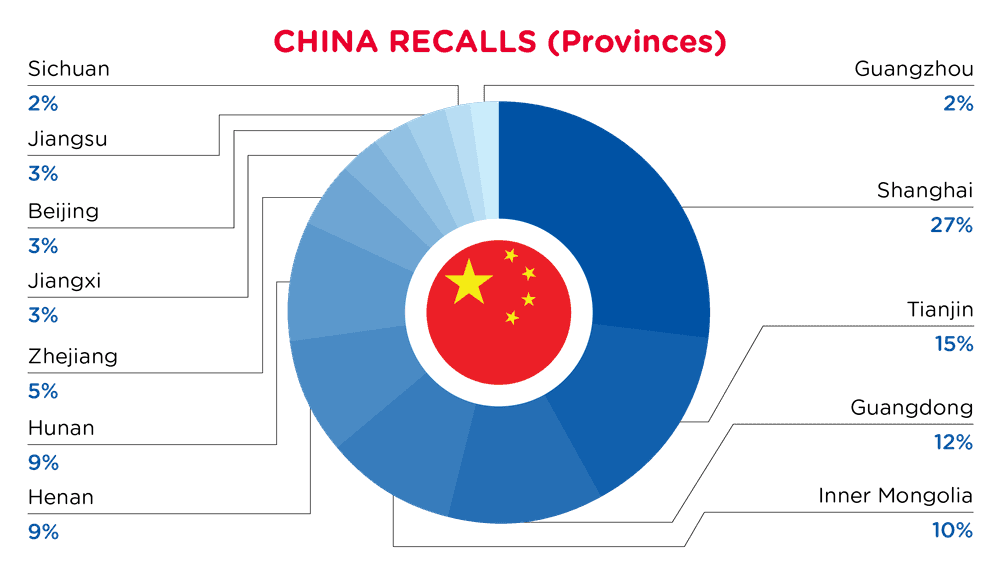
| Provinces | Frequency |
| Shanghai | 16 |
| Tianjin | 9 |
| Guangdong | 7 |
| Inner Mongolia | 6 |
| Henan | 5 |
| Hunan | 5 |
| Zhejiang | 3 |
| Jiangxi | 2 |
| Beijing | 2 |
| Jiangsu | 2 |
| Sichuan | 1 |
| Guangzhou | 1 |
For a complete list click here
Australia/New Zealand News
In Australia, when hazards are identified in consumer products, they will be recalled and published in the Recalls and Safety Alerts Database on the Australian Competition & Consumer Commission website, which is updated daily. The Australia recalls from 01 May 2025 to 31 May 2025 are summarized below:
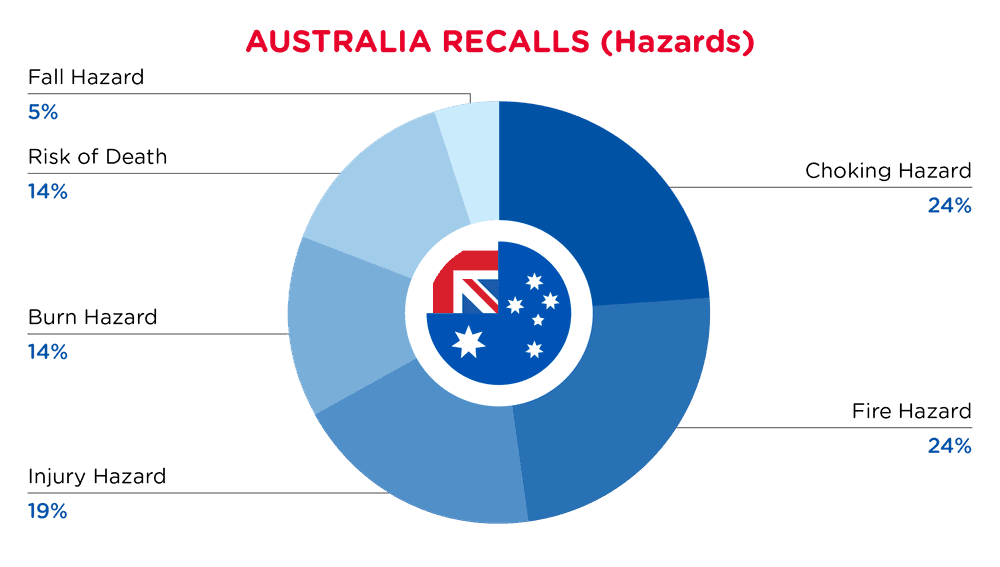
| Hazards | Frequency |
| Choking Hazard | 5 |
| Fire Hazard | 5 |
| Injury Hazard | 4 |
| Burn Hazard | 3 |
| Risk of Death | 3 |
| Fall Hazard | 1 |
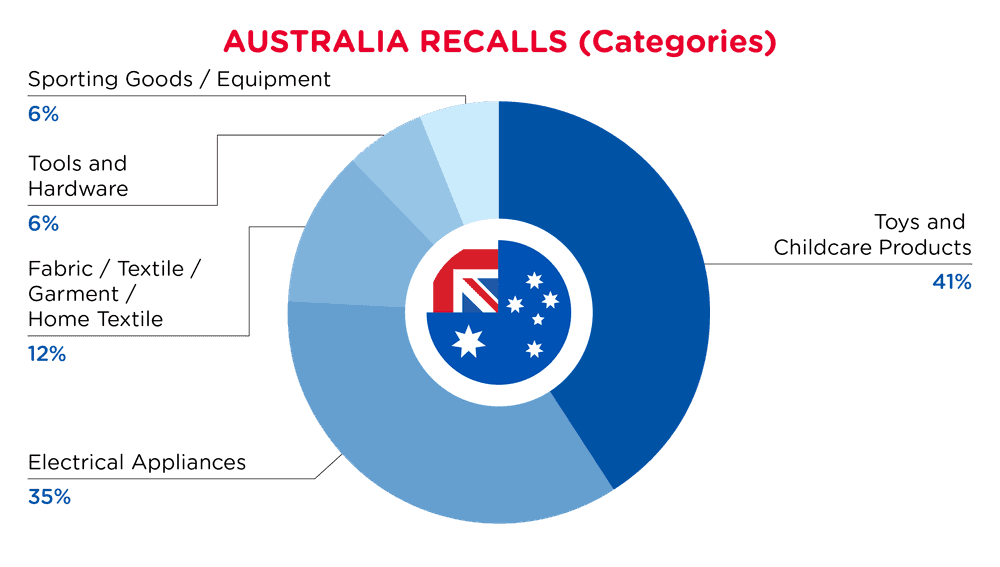
| Product Categories | Frequency |
| Toys and Childcare Products | 7 |
| Electrical Appliances | 6 |
| Fabric / Textile / Garment / Home Textile | 2 |
| Tools and Hardware | 1 |
| Sporting Goods / Equipment | 1 |
For a complete list click here
Subscribe to our Regulatory Updates
Unsubscribe at any time. Read our privacy policy.